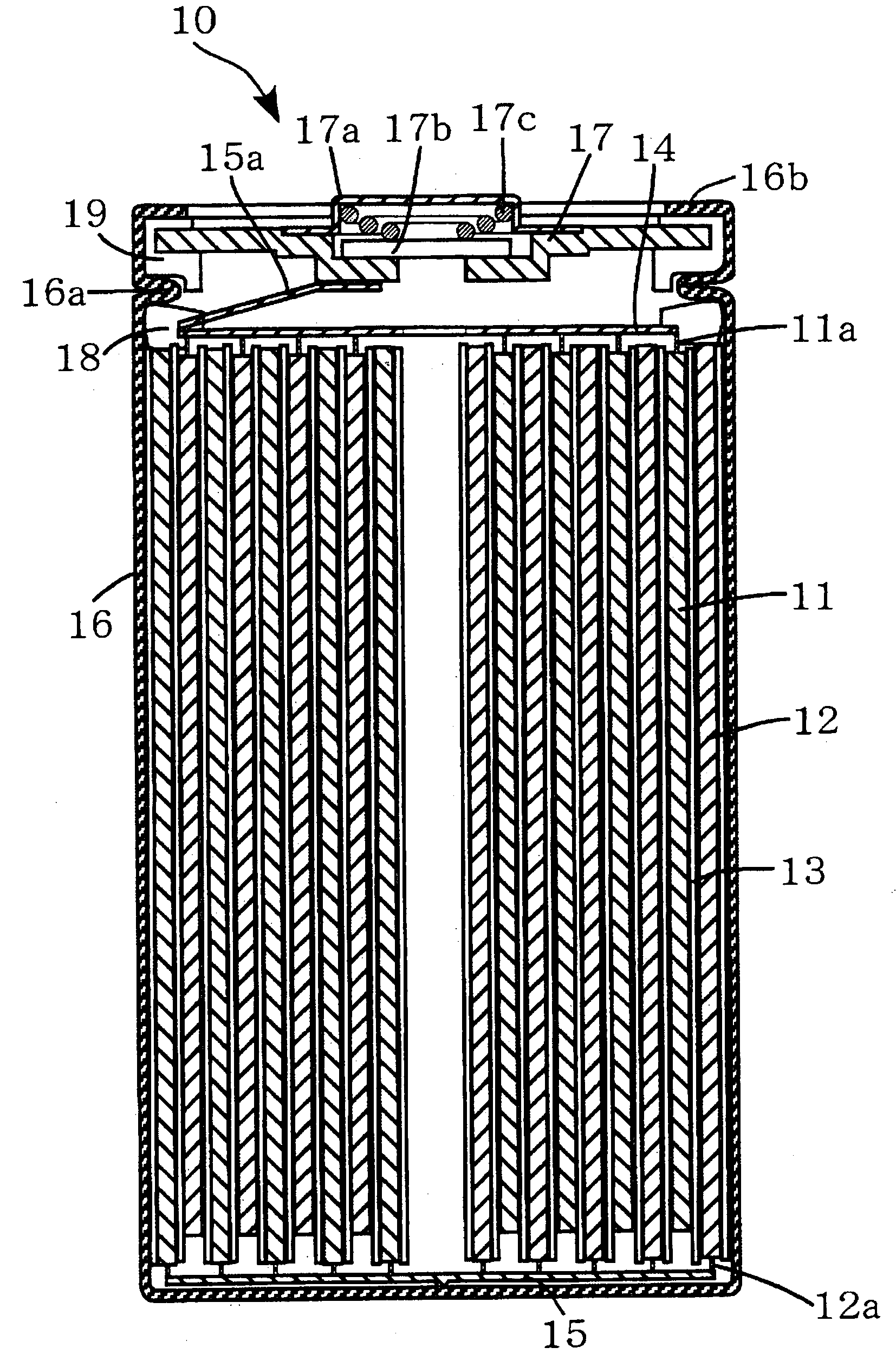Hydrogen storage alloy and alkaline storage battery employing hydrogen storage alloy as negative electrode active material
a technology of hydrogen storage alloy and active material, which is applied in the direction of cell components, natural mineral layered products, cellulosic plastic layered products, etc., can solve the problems of unstable metal hydride, small gap between metal atoms, and insufficient output use performance far beyond the conventional level, etc., to achieve high output characteristics, maintain durability and self-discharge performance, and adequate durability characteristics
- Summary
- Abstract
- Description
- Claims
- Application Information
AI Technical Summary
Benefits of technology
Problems solved by technology
Method used
Image
Examples
Embodiment Construction
[0017]Next, the embodiments of the invention are described as follows. However, the invention is not limited to these specific embodiments and, within the spirit and scope of the present invention, various modifications and alternations may be made. FIG. 1 is a cross sectional view schematically showing an alkaline storage battery of the invention.
[0018]After mixing metal elements such as lanthanum (La), cerium (Ce), praseodymium (Pr), neodymium (Nd), samarium (Sm), magnesium (Mg), nickel (Ni), aluminum (Al), cobalt (Co), manganese (Mn), and zinc (Zn) to a molar ratio specified in Table 1 below, these mixtures are put into a high-frequency induction furnace under an argon gas atmosphere to melt. Then, the molten metals are rapidly cooled to form an alloy ingot with a thickness of 0.5 mm or thinner that is used for preparation of hydrogen storage alloys a to 1.
[0019]In this case, hydrogen storage alloy a is represented by a compositional formula of La0.8Ce0.1...
PUM
| Property | Measurement | Unit |
|---|---|---|
| Temperature | aaaaa | aaaaa |
| Pressure | aaaaa | aaaaa |
| Distribution | aaaaa | aaaaa |
Abstract
Description
Claims
Application Information
 Login to View More
Login to View More - R&D
- Intellectual Property
- Life Sciences
- Materials
- Tech Scout
- Unparalleled Data Quality
- Higher Quality Content
- 60% Fewer Hallucinations
Browse by: Latest US Patents, China's latest patents, Technical Efficacy Thesaurus, Application Domain, Technology Topic, Popular Technical Reports.
© 2025 PatSnap. All rights reserved.Legal|Privacy policy|Modern Slavery Act Transparency Statement|Sitemap|About US| Contact US: help@patsnap.com


